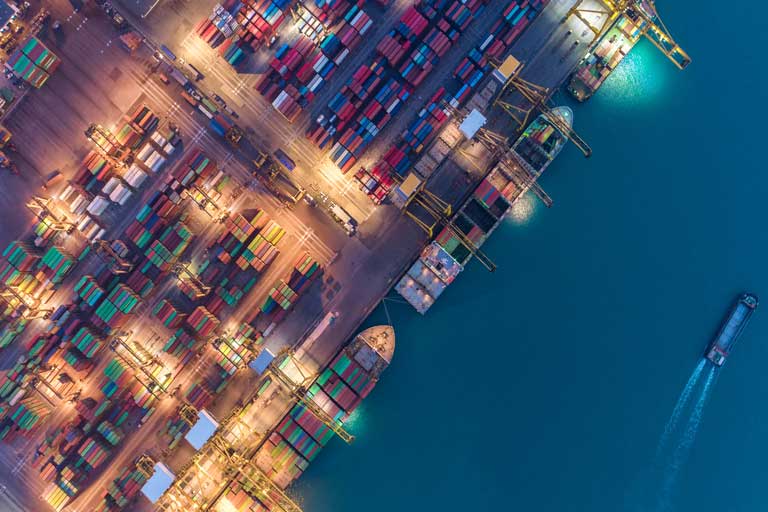3 Ways Taiwan’s SMEs Can Make The Most Of E-Commerce
The majority of entrepreneurs in Taiwan are SMEs, with growing numbers shifting their businesses online. Our latest white paper reveals the emerging trends in regional e-commerce.
At FedEx, we’ve been operating in Taiwan for over 30 years. In that time, we’ve continued to witness the strong resilience and adaptability of local businesses in the face of an ever-changing trade environment. Over the past few years, the COVID-19 pandemic brought about major change, demanding that small and medium enterprises (SMEs) pivot to new business strategies. Adaptability has never been more critical to businesses across the region.
Today, SMEs make up nearly 100% of all entrepreneurs in Taiwan. And yet in 2021, only 22% of SME retailers were using e-commerce channels to drive business revenue. SMEs may have been hesitant to explore e-commerce for a range of reasons, such as lack of understanding of the required logistics or knowledge of the right marketing channels to utilize. However, with e-commerce growth rates in the Asia Pacific region already surpassing end of 2025 projections, it’s now time for Taiwan’s SMEs to seize opportunities or fear getting left behind.
We uncover three trends local SMEs can take advantage of to make the most of growing e-commerce opportunities in the region.
Moving from multichannel to omnichannel
Taiwan businesses are servicing a mobile-first society: more than 80% of the population uses mobile devices. Mobiles are now the center of people’s daily lives, with consumers completing tasks within a few clicks from their phone. Developing more sales channels to capture this demand is critical for e-tailers.
And the most profitable business model for retailers nowadays is evolving from multichannel to omnichannel. Multichannel simply means increasing the number of your sales channels, whereas omnichannel retail places an emphasis on delivering a seamless customer experience, whether the customer is shopping from a mobile device, a laptop or in a brick-and-mortar store.
Developing an omnichannel strategy for your business is essential to stay competitive. It also means enabling both order fulfillment and returns through various locations and methods, such as in direct or indirect physical retail stores as well as through online stores and marketplaces. Not only does this offer a more convenient experience for customers, it also creates additional revenue opportunities that businesses don’t want to miss.
Today, SMEs make up nearly 100% of all entrepreneurs in Taiwan. And yet in 2021, only 22% of SME retailers were using e-commerce channels to drive business revenue. SMEs may have been hesitant to explore e-commerce for a range of reasons, such as lack of understanding of the required logistics or knowledge of the right marketing channels to utilize. However, with e-commerce growth rates in the Asia Pacific region already surpassing end of 2025 projections, it’s now time for Taiwan’s SMEs to seize opportunities or fear getting left behind.
We uncover three trends local SMEs can take advantage of to make the most of growing e-commerce opportunities in the region.
Moving from multichannel to omnichannel
Taiwan businesses are servicing a mobile-first society: more than 80% of the population uses mobile devices. Mobiles are now the center of people’s daily lives, with consumers completing tasks within a few clicks from their phone. Developing more sales channels to capture this demand is critical for e-tailers.
And the most profitable business model for retailers nowadays is evolving from multichannel to omnichannel. Multichannel simply means increasing the number of your sales channels, whereas omnichannel retail places an emphasis on delivering a seamless customer experience, whether the customer is shopping from a mobile device, a laptop or in a brick-and-mortar store.
Developing an omnichannel strategy for your business is essential to stay competitive. It also means enabling both order fulfillment and returns through various locations and methods, such as in direct or indirect physical retail stores as well as through online stores and marketplaces. Not only does this offer a more convenient experience for customers, it also creates additional revenue opportunities that businesses don’t want to miss.

Growing demand for cross-border e-commerce
Our recent What’s Next in E-Commerce white paper revealed that consumers in Taiwan are spending more online since the pandemic began. According to the white paper, over 80% of Taiwanese consumers said the e-commerce share of their purchases has increased in the last 3 years. Besides, 9 in 10 SMEs in Taiwan predicted e-commerce will continue to boom in the future.
For local retailers, international markets represent new avenues of growth. To achieve this, digital transformation is a must, especially since the pandemic with a recovering global economy. Close to 65% of Taiwan companies agree with the need to boost cross-border e-commerce – local retailers are acknowledging the importance of risk diversification.
That said, a system enabling cross-border e-commerce is not easy for businesses to develop. It takes time and effort to find suitable international marketing channels and reliable logistics partners. That’s where FedEx comes in. With our global network and reliable and efficient logistics solutions, we support SMEs as they navigate different border regulations and customs procedures across the region and beyond.
Our recent What’s Next in E-Commerce white paper revealed that consumers in Taiwan are spending more online since the pandemic began. According to the white paper, over 80% of Taiwanese consumers said the e-commerce share of their purchases has increased in the last 3 years. Besides, 9 in 10 SMEs in Taiwan predicted e-commerce will continue to boom in the future.
For local retailers, international markets represent new avenues of growth. To achieve this, digital transformation is a must, especially since the pandemic with a recovering global economy. Close to 65% of Taiwan companies agree with the need to boost cross-border e-commerce – local retailers are acknowledging the importance of risk diversification.
That said, a system enabling cross-border e-commerce is not easy for businesses to develop. It takes time and effort to find suitable international marketing channels and reliable logistics partners. That’s where FedEx comes in. With our global network and reliable and efficient logistics solutions, we support SMEs as they navigate different border regulations and customs procedures across the region and beyond.

Rising expectations for convenience
E-commerce has become a critical time-saver for consumers, with order fulfillment a couple of clicks away. At the same time, as the mobile payment usage in Taiwan exceeded 30% for the first time in 2022 , the call for on-demand services is set to soar. Globally, nearly half of consumers are willing to spend money to save time. A similar trend can be observed in Taiwan.
In Taiwan, the uncertainty of package arrival time is among the most common pain points for online shoppers. That’s why online retailers need to build a robust logistics system to meet customers’ needs.
Expert logistics partners can provide the delivery flexibility customers are looking for. Interactive e-commerce solutions like FedEx® Delivery Manager allow e-merchants to offer their customers the option to customize delivery preferences, including delivery location and time. Shipping security and convenience can go a long way in boosting customer confidence and loyalty.
The global e-commerce marketplace is showing no signs of slowing down. SMEs that recognize the opportunities for growth and adapt quickly to change will be best equipped to ride the e-commerce wave. As always, FedEx is here to help Taiwan SMEs tap into the ever-changing e-commerce market.
For more insights on e-commerce and growth opportunities for SMEs, please visit our e-commerce page here.
E-commerce has become a critical time-saver for consumers, with order fulfillment a couple of clicks away. At the same time, as the mobile payment usage in Taiwan exceeded 30% for the first time in 2022 , the call for on-demand services is set to soar. Globally, nearly half of consumers are willing to spend money to save time. A similar trend can be observed in Taiwan.
In Taiwan, the uncertainty of package arrival time is among the most common pain points for online shoppers. That’s why online retailers need to build a robust logistics system to meet customers’ needs.
Expert logistics partners can provide the delivery flexibility customers are looking for. Interactive e-commerce solutions like FedEx® Delivery Manager allow e-merchants to offer their customers the option to customize delivery preferences, including delivery location and time. Shipping security and convenience can go a long way in boosting customer confidence and loyalty.
The global e-commerce marketplace is showing no signs of slowing down. SMEs that recognize the opportunities for growth and adapt quickly to change will be best equipped to ride the e-commerce wave. As always, FedEx is here to help Taiwan SMEs tap into the ever-changing e-commerce market.
For more insights on e-commerce and growth opportunities for SMEs, please visit our e-commerce page here.
***


















 The Latest
The Latest